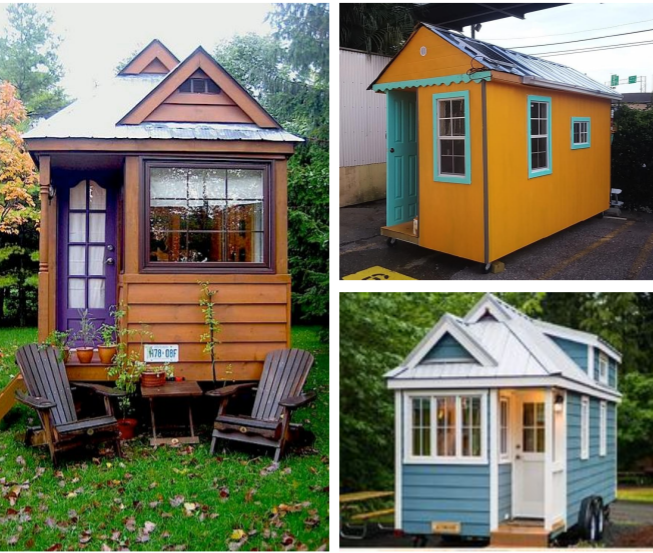
Haiyan Khan presenting Santosha plans at Ashtanga Yoga Room.
Nature and pets contribute to the healing process.
Haiyan Khan is dreaming in color. He imagines a healing community in a verdant setting where formerly homeless people can live affordably, recover from the trauma of living on the street, build a support network, learn job skills and practice wellness activities–including yoga, meditation, gardening and nutrition. After building several tiny, transitional houses, he is now working with a group of dedicated volunteers to create a village in New Orleans East that can accommodate twenty small homes. Completed next fall, Santosha Village would include a communal gathering area, kitchen, vegetable gardens, shared rest room, shower and laundry facilities, workshop with tool rental, office with computer lab and small business incubator.

Tiny houses
“A big community space is part and parcel of the plan to make social events possible,” Khan said. A farmers market, yoga classes, medical services and other amenities would be shared with the surrounding neighbors.
At an open meeting Sunday, Khan spoke before a group at the Ashtanga Yoga Room just off Freret Street.
Individuals would pay $60 per month for secure, private living quarters to help rebuild their lives. “We want to create a structure where people feel sustained,” Khan said.
Two dollars a day is something they can reliably contribute, he told them.
“It’s a village model. Villages have been around for thousands of years,” he said. “Today, we’re living the closest, yet feeling more isolated than ever.”
Although the concept of a homeless village is new to New Orleans, there are more than a dozen communities with micro-homes established around the country, including Austin, Texas; Portland and Eugene, Ore.; Olympia and Seattle, Wash.; Ventura, Calif.; Greensboro, N.C.; and Madison, Wis. Twenty more are in the planning stages. In recent years, the cost of housing has risen exponentially and employment has become less secure.
“Forty percent of Americans are one or two paychecks away from homelessness,” Khan said.
A former software engineer, Khan became interested in the concept of sustainability while volunteering to feed homeless people after Hurricane Katrina. Although greatly expanded since Katrina, transitional housing in New Orleans is still insufficient to meet the needs. Individuals can stay at most shelters for only 21 days or less, while it normally takes much longer to find a job and be able to afford permanent housing.
“Even staying in a shelter, you are back out on the street at 7:30 in the morning. There is no storage for your possessions. Where are you going to put it?”
Khan heard about the Tiny House Movement and decided to attend a workshop in Austin, Texas, to learn how to build a house the size of a car that can be pushed by a single person. After building four tiny houses, he began dreaming about an entire village.
He found an affordable acre of wooded land and volunteers began clearing the lot. Tulane’s Center for Public Service and Engineers Without Borders pitched in.
Some nearby residents are concerned about who Santosha’s residents might be, but there will be an application process, review, and probationary period. Khan has already established relationships with many of the individuals interested in living at Santosha Village because he has led weekly wellness sessions with them at the Harry Tompson Center over the past two years.
Tiny houses are not just appropriate for homeless people. Recent college graduates, seniors or artists living on a small income can benefit from a modest lifestyle with lowered overhead costs.
“Hitch it to a U-Haul and take it where you want to go. In the Gulf Region, a tiny house can be your hurricane evacuation plan,” he mused.
 NOLAbeings
Multimedia artist Claire Bangser created NOLAbeings as a portrait-based story project that marries...
NOLAbeings
Multimedia artist Claire Bangser created NOLAbeings as a portrait-based story project that marries...
 Data corner: Adobe Suite (create a PDF, social media graphic, presentation, edit a photo and video
Data corner is where you go to work with analytics and top tech skills. It takes on everything from PERL and SQL to Canva and Sprout Social.
Data corner: Adobe Suite (create a PDF, social media graphic, presentation, edit a photo and video
Data corner is where you go to work with analytics and top tech skills. It takes on everything from PERL and SQL to Canva and Sprout Social.
